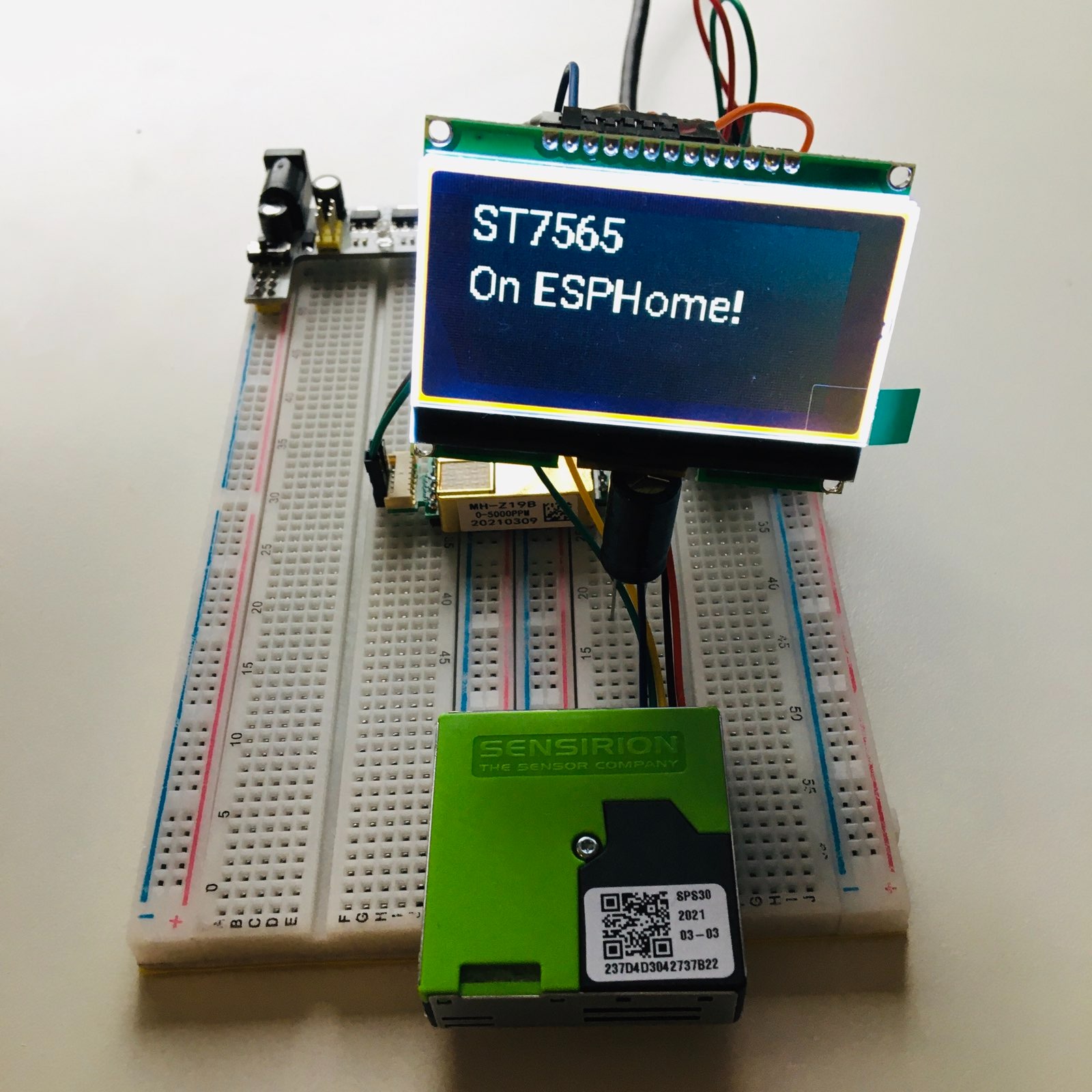This repository implements an ESPHome display component for ST7565 displays.
To use this component in your project you will have to add it as an external component by adding the following to your configuration YAML:
external_components:
- source: github://monorkin/esphome_st7565@1.1.0
components: [ st7565 ]Then you will have to setup an SPI bus as the display communicates over 4-wire SPI. You will have to add something like the following to your configuration YAML, the exact pins and id might be different for your setup:
spi:
- clk_pin: D5
mosi_pin: D6
id: primary_spi_busFinally, you add the display like any other ESPHome display module.
Notice that you have to configure a CS (chip select) pin as with any other SPI device, but you also have to define a DC (data/command) pin - sometimes labeled RS (register select). You can optionally pass a contrast value (0 to 63), a width and a hight (for screens that are 136x65) and a reset pin (the display should function properly in most cases even without it attached).
display:
- platform: st7565
spi_id: primary_spi_bus
width: 128
height: 64
contrast: 16
dc_pin:
number: D8
cs_pin:
number: D7
reset_pin:
number: D0
# rotation: 180 # If you mount the display upside down
lambda: |-
it.print(0, 0, id(my_font), "ST7565");
it.print(0, 20, id(my_font), "On ESPHome!");There is a minimal example configuration
external_components:
- source: github://monorkin/esphome_st7565@main
components: [ st7565 ]
# Project configuration - you have to configure this for your setup!
# esphome:
# name: my-project
# platform: ESP8266
# board: nodemcuv2
spi:
- clk_pin: D5
mosi_pin: D6
id: primary_spi_bus
display:
- platform: st7565
spi_id: primary_spi_bus
width: 128
height: 64
contrast: 16
dc_pin:
number: D8
cs_pin:
number: D7
reset_pin:
number: D0
# rotation: 180 # If you mount the display upside down
lambda: |-
it.print(0, 0, id(my_font), "ST7565");
it.print(0, 20, id(my_font), "On ESPHome!");This project is dual-licensed under the GPLv3 (all C++ code) and the MIT license (all Python code).
You can read the details in the LICENSE file, but a TL;DR is that the code was initially created by the ESPHome team, it comes with no warranty of any kind, the C++ code must stay open-source, and derivatives (forks) must contain a notice about the original's authors.
These licenses were inherited from the ESPHome project from where most of the code was extracted, and then adjusted to work with the ST7565 display drivers.
That's it, enjoy!
